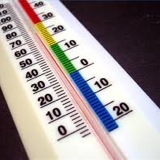Information
-
Document No.
-
Audit Title
-
Client / Site
-
Conducted on
-
Prepared by
-
Location
-
Personnel
JDE Address Number
-
JDE Site Number
Dates
-
Audit Due Date
-
Date Of Visit
-
Date Audit Completed
Results
-
Laying Audit Passed?
-
Tesco Audit Passed?
Farm Representative
-
Farm Representative - Name
-
Farm Representative - signature
Lion Code Laying Farm Inspection report
-
Name Of Business
-
Contact Name
-
Farm address
-
LF number
-
Date of inspection
-
Time in
-
Time out
-
BEIC subscriber supplied
-
Laying system
-
Pullet Supplier
-
PR Number
-
Veterinarian
-
Laboratory
-
Number of flocks on site
- 1
- 2
- 3
- 4
- 5
- 6
- 7
- 8
- 9
- 10
- 11
- 12
- 13
- 14
- 15
-
Number of houses on site
- 1
- 2
- 3
- 4
- 5
- 6
- 7
- 8
- 9
- 10
- 11
- 12
- 13
- 14
- 15
-
Total Number of Birds on site
Non Conformances
-
Category
- A
- B
- C
- D
- E
- F
- G
- H
- I
- J
- K
- L
- M
- N
- O
- P
- Q
-
Category Number
- 1
- 2
- 3
- 4
- 5
- 6
- 7
- 8
- 9
- 10
- 11
- 12
- 13
- 14
- 15
- 16
- 17
- 18
- 19
- 20
- 21
- 22
- 23
- 24
- 25
- 26
- 27
- 28
- 29
- 30
- 31
- 32
-
Input details of non conformance below
-
Category
- A
- B
- C
- D
- E
- F
- G
- H
- I
- J
- K
- L
- M
- N
- O
- P
- Q
-
Category Number
- 1
- 2
- 3
- 4
- 5
- 6
- 7
- 8
- 9
- 10
- 11
- 12
- 13
- 14
- 15
- 16
- 17
- 18
- 19
- 20
- 21
- 22
- 23
- 24
- 25
- 26
- 27
- 28
- 29
- 30
- 31
- 32
-
Input details of non conformance below
-
Category
- A
- B
- C
- D
- E
- F
- G
- H
- I
- J
- K
- L
- M
- N
- O
- P
- Q
-
Category Number
- 1
- 2
- 3
- 4
- 5
- 6
- 7
- 8
- 9
- 10
- 11
- 12
- 13
- 14
- 15
- 16
- 17
- 18
- 19
- 20
- 21
- 22
- 23
- 24
- 25
- 26
- 27
- 28
- 29
- 30
- 31
- 32
-
Input details of non conformance below
-
Category
- A
- B
- C
- D
- E
- F
- G
- H
- I
- J
- K
- L
- M
- N
- O
- P
- Q
-
Category Number
- 1
- 2
- 3
- 4
- 5
- 6
- 7
- 8
- 9
- 10
- 11
- 12
- 13
- 14
- 15
- 16
- 17
- 18
- 19
- 20
- 21
- 22
- 23
- 24
- 25
- 26
- 27
- 28
- 29
- 30
- 31
- 32
-
Input details of non conformance below
A - Laying Farms
-
A1* Is there a Copy of the current Lion Code of Practice?
-
A2* Is there a copy of the current Certificate Of Registration available on site?
-
Enter details of certificate expiry date below
-
A3*. Are copies of the last 2 self audits, which have been carried out every 6 months, available?
-
Give audits dates below:
-
A4* Is the site currently registered with a Lion Subscriber?
-
Enter details of subscriber below
B - Pullet Rearing
-
B1* Are pullets received from a Lion Registered rearing farm?
-
Give PR number below:
-
B2* Has a properly completed BEIC Passport and Animal Transport Certificate been received from the Rearing Farm for the Pullets?
-
State Passport number:
C - Housing and Equipment
-
C1 Are all birds kept in accordance with the Welfare Standards defined in Annex K?
-
Registration number of Defra, or Scottish Government or Welsh Assembly Government, or DARD;
-
C2. Are all Organic Flocks registered with an Organic certifications body?
-
Registration number of organic body:
-
C3. Are maximum and minimum temperatures recorded daily?
-
C4. Is the ventilation system sufficient to maintain a controlled environment?
-
C5. Does lighting comply with section 6 C5 of the Lion Code (are birds provided with a minimum of 8 hours of consecutive light per day and an interrupted period of darkness of about one third of the day?)
-
C6. Is lighting at a minimum of 10 lux at feed trough level?
-
C7*. Cage: does the stocking density comply with the scheme standards in all houses?
-
C8*. Barn: Does the stocking density comply with the scheme standards in all houses?
-
C9*. Free Range: Does the stocking density comply with the scheme standards in all houses?
-
C10*. Organic: Does the stocking density comply with the current standard set by the certification body?
-
C11. What is the type of litter used in non-cage systems?
-
C12. Is the quality and depth of litter to an agreed standard?
-
If comments on litter please enter below:
-
C13*. Is there a documented pest (rodent) control programme operating?
-
C14*. Are pests suitably controlled?
-
C15. Is the poultry house and egg store proofed against rodents (rats, mice)?
-
C16. Is a copy of the DEFRA 'Code of Practice for the Prevention of Rodent Infestations on Poultry Farms' available?
-
C17. Is there any evidence of wild birds in the house?
-
C18. If flies are present are they suitably controlled?
-
C19. If the pest control programme is operated by third party contractors, do they demonstrate appropriate competence?
-
C20. If in-house: can staff responsible demonstrate appropriate competence and are training records available?
-
C21. Are all domestic pets excluded from the poultry housing and associated egg storage areas?
-
C22. Do ammonia and dust levels in poultry houses conform to industry standards?
-
C23. ORGANIC/FREE RANGE: Are all birds adequately protected from predictors?
-
C24*. Is there a documented management procedure to deal with birds in deep pits or under slatted floors?
-
C25*. Are records kept of birds recovered from deep pits or under slatted floors and are these records used to improve or maintain performance?
-
C26*. Is there any evidence of birds in deep pits or under slatted floors?
-
C27 Do birds have access to surfaces treated with paints or disinfectants?
-
C28. Are birds prevented from access to pesticides at all times?
-
C29. Are wood preservatives and fumigants only used internally during the turnaround period when no flock is present?
-
C30. Is all mains electrical circuitry within the house inaccessible to the birds?
-
C31. Is the furniture of the poultry house in non-cage systems constructed in such a way that it does not hinder free movement of the birds through the system and prevents injury to the birds?
D. General Hygiene
-
D1. Is there a fully documented terminal cleaning schedule with records of completion?
-
D2. Are only BEIC Lion approved disinfectants used during clean-out?
-
D3. Is there a fully documented routine cleaning schedule with records of completion?
-
D4. Is the general appearance and and cleanliness of the house acceptable?
-
D5. Is the general appearance/cleanliness of the site satisfactory?
-
D6. Is all rubbish/waste disposed of hygienic ally and safely?
-
Disposal method used:
-
D7. Are there hand washing facilities,sanitisers, and hand drying facilities available for staff and visitors?
-
D8. Are hand washing procedures documented?
-
D9. Have all staff received training in Food Hygiene Training commensurate with the operation?
-
D10. Is this documented?
-
D11. Have staff received a hygiene refresher training course every 3 years?
-
D12. Is protective clothing provided and is it changed and regularly laundered?
-
D13. Are suitable precautions taken against cross contamination where Staff look after poultry or livestock on other premises?
-
D14. Are poultry prevented from access to any storied litter or manure/used litter on site?
-
D15. Are controls in place to ensure that rearing manure/litter is not spread on land to which free range flocks have access?
-
D16. Are tractors used for manure/litter handling thoroughly cleansed and disinfected before being used for other operations?
E. Salmonella Control
-
E1*. Was a full hygiene monitoring programme completed before replacement pullets were taken onto the farm?
-
E2*. Was post cleaning hygiene swabbing for salmonella carried out as required by the BEIC Lion Code (section 6 E2)?
-
E3*. Was the 15 weekly salmonella swabbing for Salmonella carried out as required by the BEIC Lion Code (section 6 E3)?
-
E4*. Are all the Salmonella results available for the current and previous flocks?
-
E5*. Are all the birds vaccinated against Salmonella Enteritidis?
-
Give batch numbers below:
-
E6*. Has BEIC been immediately informed of a non-vaccinal Salmonella Enteriditis or Typhimurium isolated from the laying flock, or it's environment?
F. Feed and Water
-
F1*. Is feed produced in accordance with UFAS standards?
-
F2*. If a mobile mill-and-mix unit is used is it a member of the National Association of Agricultural Contractors and does it comply with the NAAC Code?
-
F3. Are feed consumption levels monitored and recorded weekly?
-
F4. Is information available to demonstrate that feed rations do not contain; any ingredients derived from poultry offal or mammalian meat and bone mean; growth promoters; canthaxanthin; or any raw material that is likely to produce taint or toxin in eggs?
-
F5. Are feed samples retained for a minimum period of 12 weeks at the mill or the farm?
-
F6. Is information available to demonstrate that lasalocid is not present in layer diets?
-
F7 is the water source potable (drinkable)?
-
F8. Are water consumption levels monitored and recorded daily?
-
F9. Are water header tanks suitably covered?
G. Veterinary Visits
-
G1. Is the unit/site registered with a veterinary practice?
-
Name of vet or practice:
-
G2. Date and reason for last veterinary visit:
-
G3. Are reports available?
-
G4. Is there a written veterinary health plan available?
-
Date of Vet Health Plan:
H. General Medication
-
H1 Is there a medicine record in use which is up to date and correctly documented, with veterinary written procedures?
-
H2. Are medicines stored safely? (as recommended)
-
H3. Are they correctly labelled?
-
H4. Is the person responsible for administering medicines aware of the correct withdrawal periods for all medicines used?
-
H5. Is the Veterinary Medicines Directorate (VMD) Code of Practice on the Responsible use of Animal Medicines on the Farm available and adhered to at all times?
-
H6*. Have any residues in eggs found to be above the action level during the national statutory surveillance scheme been notified to BEIC and the subscriber immediately?
I. Medication in Feed
-
I1. Is all medicated feed clearly labelled?
-
I2. Are medicated and non-medicated feeds kept separate?
J. General Welfare
-
J1*. Do all staff have access to a copy of the DEFRA "Laying Hens Code of Recommendations for the Welfare of Livestock" and have they received instruction on it?
-
J2* Does all automated ventilation equipment have an alarm and a fail-safe device and / or standby generator?
-
J3*. Is the alarm, fail safe and / or standby device checked weekly?
-
J4*. If yes, are they recorded?
-
J5*. Does all other automated equipment upon which the birds welfare is dependent, incorporate a fail safe and / or standby device, e.g. Feeding, drinking, lighting ventilation systems etc?
-
J6*. Are all birds inspected at least once a day?
-
J7*. Are staff adequately trained to destroy sick or injured birds humanely if necessary?
-
J8. Is mortality recorded?
-
J9*. Are dead and culled birds disposed of in compliance with the Animal By-Products Regulations (2003)?
-
J10. Are bags stored for off-site disposal kept in a lockable facility?
-
J11. Are there adequate procedures in place for fire control and prevention?
K. Stockman Training
-
K1. Has the person responsible for the day to day management of the unit demonstrated competence in stockmanship and welfare considerations?
-
K2. Are adequate facilities available for stock inspection? (e.g. extra lighting)
-
K3. Can birds on all tiers be clearly seen?
L. Handling And Transport of End Of Lay Hens
-
L1*. Is the timing and loading/unloading and transportation planned ahead to comply with current legislation and industry guidelines?
-
L2. Does the system ensure that the birds do not suffer prolonged hunger, thirst or depravation of rest?
-
L3. Is food available until at least 12 hours prior to slaughter?
-
L4. Do crates or modules meet the current welfare requirements of the birds?
-
L5. Are 'dead on arrival' recorded at the processing plant and copied to the farm?
-
L6. Have any DOA'S >0.5% been investigated and the corrective action points identified and been followed through?
-
L7. Is there a nominated team member responsible for maintaining welfare standards?
-
Name and position of nominated team member:
-
L8. Have catching personnel been made aware of the relevant sections of the 'Joint Industry Welfare Guide to the Handling of End Of Lay Hens and Breeders'?
M. Egg Storage
-
M1*. Does the frequency of egg collection meet the BEIC Lion Code Requirements
-
M2*. Does the colour of the keys trays used conform to the BEIC Lion Code (and if plastic trays are utilised, has the packing centre provided the site documented authorisation that's eggs can be packed onto plastic keyes trays which do not follow the standard colour of Keyes trays)?
-
M3. Are all eggs stored separately from the poultry house?
-
M4*. If yes, is the store temperature controlled, meeting the BEIC Lions Code requirement of <20*C?
-
M5. Are these temperatures recorded?
-
M6. Are chemicals / cleaners used to maintain egg room hygiene BEIC/DEFRA approved and non-tainting?
-
M7. Is relevant equipment such as pallets, pellet winners, trolleys kept clean when in use and are eggs protected from rain, sunshine and pest contamination?
-
M8. Are eggs collected frequently and dirty eggs or cracked or broken eggs removed from the collection system at the earliest opportunity?
-
M9. Are dirty and cracked eggs handled separately and not sold for human consumption in shell?
-
M10. Are clean egg trays used and lorries collecting them visibly clean?
-
M11. Are dead and culled birds removed before running the egg collection belt?
-
M12. Are egg belts regularly cleaned, serviced and maintained?
-
M13. Is there an effective and well maintained system of manure removal to prevent faecal contamination of eggs and feed troughs?
-
M14. Are daily production records maintained on farm throughout the flocks life and kept for six months after the flock is depleted?
-
M15. Is all egg movement accompanied by written documentation for proof of dispatch date, identity of age of egg, the name, address and distinguishing number of the production establishment, type of production with BEIC registration number and quantity?
N. Biosecurity
-
N1. Is a visitors book available ( including full name, address, and contact mobile and landline telephone numbers) available and maintained on site?
-
N2. Is protective clothing available for visitors?
-
N3. Are foot baths or alternatives available?
-
N4. Are only BEIC /DEFRA approved disinfectants used?
-
N5. Is there a Biosecurity plan in place?
O. Staff
-
O1 Are separate facilities available for staff?
-
O2. Is smoking only allowed in designated external areas? Is eating and drinking only permitted in designated areas?
-
O3. Are COSHH records held on site?
-
O4. Are these COSHH records up to date?
P. Complaints
-
P1. Is there a complaints system in place for complaints raised by external customers relating to issues of compliance with the Lion Code standard?
-
P2. Are there systems in place to ensure that such complaints are adequately investigated, signed off and a record Of actions taken documented?
Q. Lion Passport
-
Q1*. Was a copy of the current Lion Passport fully completed and was it forwarded to The Subscriber no later than s14 days after puller transfer?
-
Q2*. Was a copy of the current Lion passport fully completed and was forwarded to the subscriber no later than 14 days after depletion of the flock?














